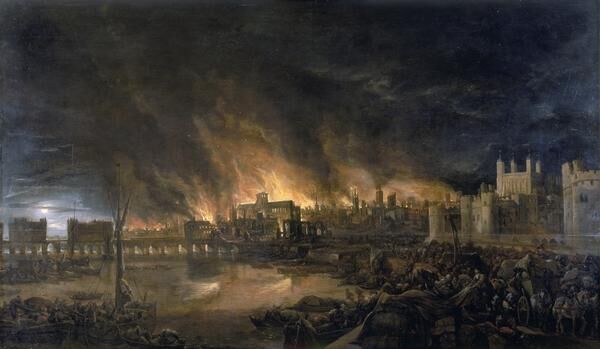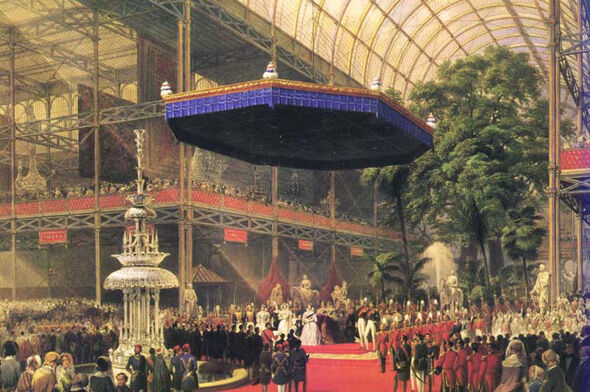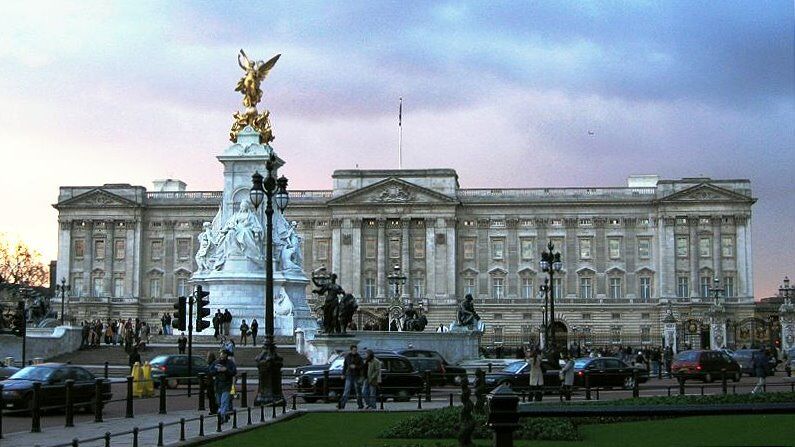The concepts covered in this sheet go beyond what is covered in secondary school. This is supplemental information for students who want to find out more.
Due to its geographical location, London mainly developed as a port city. Beginning in the 14th century, London developed around two main areas: the City (east), the economic sphere, and Westminster (west), the political sphere and home to the monarchs. The port continued to expand during the colonial period and London became the heart of the trade routes, making it the most important port in the world. Soon, the London agglomeration spilled beyond the city walls.
In the mid-17th century, London’s population was decimated by the Great Plague. This epidemic killed roughly 15% of the total population.
Nevertheless, London was the most populous city in the land. Unfortunately, a fire broke out on September 2, 1666 and spread rapidly throughout the wooden houses. The fire was under control 3 days after it started, and was eventually extinguished on September 9, largely due to rain. The blaze caused catastrophic damage to the city: 80% of London was destroyed, including most public buildings. Thousands of people were left homeless.

London’s reconstruction after the fire was the city’s first urban planning operation. The architects got rid of the Gothic sections of the city in favour of new buildings with Baroque and classical architecture. Demographic pressure led to urban sprawl in the surrounding suburbs. Over the next few centuries, London’s leaders continued to rebuild London in a similar fashion and several bridges were built during this period.
In the early 19th century, London was the only city in England with more than 100 000 inhabitants. The city was already growing when industrialization began with its main industries (cotton, railroads and steel), attracting both immigrants and people living outside the city. At the beginning of industrialization, the development and expansion of the city were less controlled.
The city was overflowing into the outlying suburbs. The estimated population in 1851 was 2.3 million. London was on its way to becoming a powerful metropolis. It was the most populous city in the world and the centre of finance and capitalism.
As the first industrialized city, London has long been a benchmark for technology and industry. Its influence was especially evident at the two world fairs. During these fairs, manufacturers demonstrated their know-how and innovations to visitors. Six million people visited the 1851 Great Exhibition in London.

In the early 19th century, London’s boroughs were defined by the activities of their inhabitants. The business district was controlled by the new bourgeoisie class, and included big companies, banks and the stock exchange. In 1851, around 25% of the population, called the business class, lived in the business district. About 75% of the population lived in working-class neighbourhoods, where workers lived in cramped conditions. Overcrowding in working-class neighbourhoods fostered violence. At this time, in 1888, Jack the Ripper was terrorizing the streets of London. Living conditions were so harsh that, in 1889, it is estimated that one third of London’s population was living below the minimum necessary income.
Urban transportation was the first innovation put in place to improve London. In 1829, the first buses were operating in the city. In 1836, the railroad changed the face of London. In 1863, a steam train running in a trench or tunnel was built as a predecessor to the London Underground, which opened in 1900. Nicknamed the London Tube, this subway system operated with electric trains.
Architect John Nash was King George IV’s appointed urban planner. He played a big role in London’s transformation. The King entrusted John Nash with designing the city’s new facilities and then creating a public plan for urban development. This plan included building public squares and prestigious buildings as well as widening streets to accommodate more traffic. John Nash designed Buckingham Palace, the National Gallery and Trafalgar Square.

However, John Nash drew some criticism for mixing architectural styles throughout London. Many people also criticized his excessive use of neo-Gothic styles. At the end of the 19th century, in 1890, London covered 316 km2 with some 7800 streets.
|
Year |
Population |
|
1851 |
2.3 million inhabitants |
|
1900 |
6 million inhabitants |
|
Country |
Urbanization rate |
|
France |
44% |
|
Germany |
62% |
|
Great Britain |
90% |